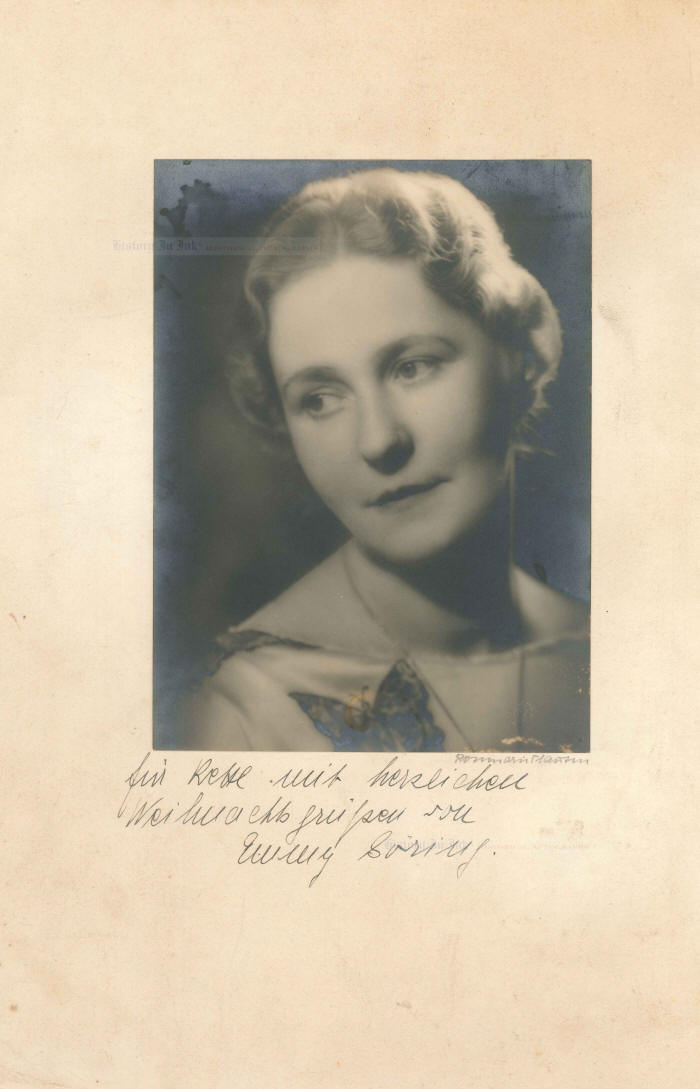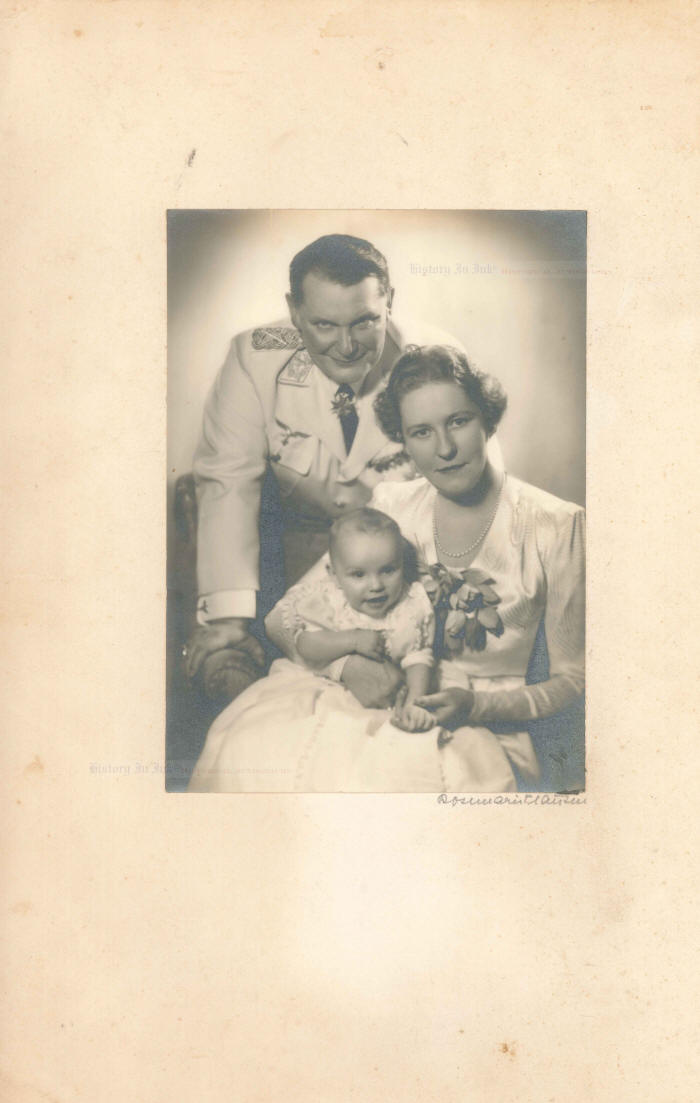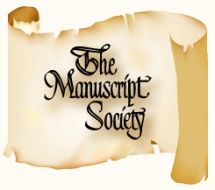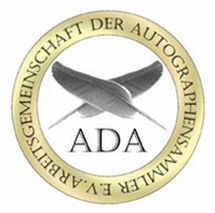


1725201
[Hermann Göring]
Emmy Göring
Scroll down to see images of the item below the description
Extremely rare, if not unique, oversize signed photograph
of the second wife of Nazi Reichsmarschall Hermann Göring,
together with an unsigned family portrait
Emma Johanna Henry “Emmy” Göring, 1893–1973. German actress; second wife of Nazi Reichsmarshall Hermann Göring. Extremely rare large format black-and-white portrait photograph signed, Emmy Göring. Together with unsigned black-and-white portrait of Hermann and Emmy Göring with their daughter, Edda.
These huge portraits were taken in 1938 by the award-winning German theater and portrait photographer Rosemarie Clausen, who was Emmyʼs friend and the Göringsʼ personal photographer. They likely became acquainted during Emmyʼs work as an actress at the National Theater in Weimar. Clausen has signed both photographs in pencil on the mount at the lower right beneath the images.
The portrait of Emmy shows her with a pensive expression. Emmy has inscribed and signed “For Rettl with warm Christmas greetings from Emma Göring.” The photograph was likely given to a member of the Göringsʼ staff at their Berlin country estate, Carinhall, which Hermann Göring named after his first wife. After Carin died in 1931, Göring married Emmy in 1935 in a lavish Berlin ceremony at which German Führer Adolf Hitler served as Göringʼs best man.
The accompanying family portrait shows Edda, only a few months old, on her motherʼs lap, with a smiling father leaning over the back of their chair. Göring is wearing his uniform as a Generalfeldmarschall of the Luftwaffe, the German Air Force. He wears the Pour le Mérite, the order of merit established in 1740 by King Frederick II of Prussia, which he received as a World War I fighter pilot ace. Edda was born June 2, 1938, shortly before Clausen made these portraits in time for Christmas. In 1990, she commented of her father: “I loved him very much, and it was obvious how much he loved me. My only memories of him are such loving ones, I cannot see him in any other way. . . . He was always a good father to me.”
The photograph of Emmy is extremely rare in this size, if not unique. The image is 6½” x 9” and is mounted to a 11¾” x 16½” mount. Our research has not found any others of this size, although they exist in postcard-size prints. The family photograph is also a 6½” x 9” print, but the mount is even larger, 13” x 17½”.
Images by Clausen (1907–1990) are collectible in their own right. Clausen, who was married to the German color film pioneer Jürgen Clausen (1905–1944), became Germanyʼs most renowned theater photographer in the decades after World War II. Her Berlin studio was destroyed—and, thus, presumably the negatives to these photographs were also destroyed—during the 1945 bombings of the German capital. The Hamburg Museum of Arts and Crafts has a large collection of her exhibition expositions, and an archive of her post-war film negatives is located at the University of Hamburgʼs Center for Theater Research–Hamburg Theater Collection. Clausen died in Berlin at nearly age 83.
These photographs are in good to fine condition. The photo of Emmy is silvered in the dark areas around the edges, most noticeably at the top. A few light spots at the bottom right that appear to be scratches on the photo are actually part of the photo itself, likely from defects in or scratches to the original negative. The print is tipped to the mount at the upper left, but it is loose where the other corners have previously been tipped to the mount. It could, of course, be reattached at all of the corners. The textured mount is toned and has scattered small stains and handling bends, affecting nothing. The photograph of the Göring family is in much the same condition, with silvering in the dark areas, but the print is loose only at the lower left corner, and there are a few darker stains on the mount.
Despite their controversial subject matter, these portraits are beautiful works of art by one of Germanyʼs most noted portrait photographers. They are desirable pieces from the golden age of black-and-white portrait photography and from Germany during the late 1930s, before World War II began.
We reject Nazism and all that it represented. Nevertheless, we offer these photographs because, although it is despised, the German Third Reich, to which the Görings were integral, had an undeniable effect on the course and history of the 20th Century. We also offer these photographs because of their extreme rarity and their value as examples of portraiture art.
Unframed.
_____________
These items have been sold, but
click here to see other
World History items
that we are offering.



